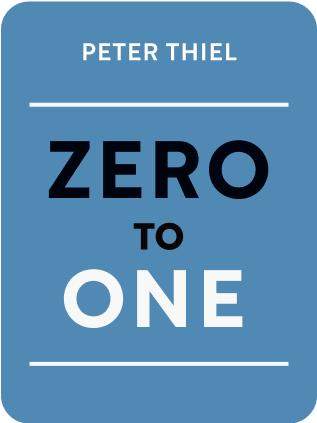

This article is an excerpt from the Shortform summary of "Zero To One" by Peter Thiel. Shortform has the world's best summaries of books you should be reading.
Like this article? Sign up for a free trial here .
What are market disruptors? Do you want to be a market disruptor, or is there a better way to form your business?
In order to be a market disruptor, you need to be able to visualize an old industry from a new angle, and produce a product that changes the game. Recent technologies have been defined by market disruptors. But is that what you want to be? Peter Thiel explains why you don’t.
Market Disruptors: Why You Don’t Want to Be One
“Market disruptors” continue to be a buzzword in Silicon Valley, but for startups, the concept can limit or distort your thinking and thus undermine success.
Originally, market disruptors meant the strategy of using new technology to make and sell a product cheaply, then gradually improve it and surpass high-end versions sold by competitors using older technology. PCs disrupted the market for mainframe computers; at first they seemed insignificant, but they eventually displaced mainframes. Similarly, mobile devices are disrupting the market for PCs.
However, the term market disruptors, or industry disruptors, has since come to mean little more than changing or improving something. When entrepreneurs think of their companies as disrupting a market, they’re focusing on things as they currently are, rather than coming from a new perspective. It’s far more important to focus on the new product you’re creating than on how old companies will react to it. If your company is fixated on disrupting existing companies, then it isn’t entirely new and isn’t likely to become a monopoly.
Industry disruptors also get into losing battles. For example, in 1999, Napster tried to disrupt the music recording industry but ultimately ended up in bankruptcy.
While some might view PayPal a one of the market disruptors, it didn’t challenge an existing company. PayPal took some business from Visa initially, but it actually ended up helping Visa by expanding the market for online payments overall. PayPal created a positive dynamic, while Napster aimed to eliminate an industry.
As you expand your startup into related markets, don’t try to fit with market disruptors. Instead, avoid competitive markets.
Market Disruptors Don’t Build for Future Profits
A monopoly by definition has avoided competition, but to be a great business, there’s more: it must last into the future.
These companies are true business disruptors.
To understand how this works, compare the New York Times Company with Twitter. Each employs thousands of people and delivers news to millions. However, in 2013, Twitter was valued at $24 billion, which was 12 times the Times’ market capitalization. Yet the Times earned $133 million in 2012, while Twitter lost money. How could the money-losing Twitter be worth more than the money-gaining Times? (Shortform note: market capitalization is the total value of a company’s shares of stock.)
The reason for the dramatic difference in value is cash flow—the hallmark of a great business is its ability to generate future cash flow. Investors expected Twitter to generate monopoly profits for the next 10 years, while investors believed the New York Times lacked that ability.
A business’s current value is the sum of the profits it will earn throughout its lifetime. Low-growth businesses are those like newspapers that aren’t expected to grow dramatically in the future—most of their value is near-term. They might retain their value and keep current cash flows for a few years, but competition will erode it in the future. A successful restaurant might be profitable today, but cash flows will dwindle in a few years as new restaurants open. This doesn’t happen with true market disruptors.
The pattern is the opposite for tech companies—they often lose money initially and require time to build value. Most of a tech startup’s value will be a decade or more in coming.
For example, by March 2001, PayPal hadn’t made a profit, but revenues were growing 100% year over year. Thiel calculated that 75% of the company’s current value would come from profits generated in 2011 and thereafter. However, he underestimated. At the time of this book’s publication in 2014, it appeared most of the company’s value would come from 2020 and beyond.
The Allure of Short-Term Profits
To be valuable, a company has to both grow and persevere. However, many entrepreneurs overemphasize short-term growth because it’s easier to measure than long-term potential. Focusing on short-term metrics, such as user statistics and revenue targets, can keep you from noticing issues affecting future viability. This is a classic pitfall for “business disruptors.”
For example, initial rapid growth at Zynga and Groupon distracted managers and investors from long-term challenges. While Zynga did well with the game Farmville at first, the company lacked the ability to produce a consistent stream of entertainment content. Groupon’s online deal website also grew initially as local businesses tried the product, but the company struggled to convert them into repeat customers.
In addition to short-term growth, entrepreneurs must build the business to ensure it will last for a decade or more.
Building a Monopoly
Also critical to a monopoly startup’s success is how you choose and expand your market. Start with a small market because it will be easier to dominate than a large one.
But make sure that your intended market really exists. PayPal’s first market—PalmPilot users who wanted to send money to each other—was essentially nonexistent. PalmPilot users were scattered around the world and had little in common, so not many of them needed to send money to each other.
After dropping that idea, PayPal targeted eBay auctions and found success by serving 25% of a few thousand high-volume power sellers who really needed a way to receive payments online. It’s better to focus on a small number of customers involved in a common activity or concentrated in a particular environment with no competitors than to reach for millions of disparate users.
Sometimes entrepreneurs and business disruptors think they’ll profit by getting a small share of a huge market—for instance, 1% of a $100 billion market. But even if you get a foothold in the market, as a small player, you won’t make money because competition will eat up your profits.
Being a market disruptor sounds appealing, but Peter Thiel argues that there are better and more profitable ways to build a business, rather than trying to fight with so-called business disruptors. Remember—don’t be a market disruptor. Be a last mover.

———End of Preview———
Like what you just read? Read the rest of the world's best summary of Peter Thiel's "Zero To One" at Shortform .
Here's what you'll find in our full Zero To One summary :
- Why some companies genuinely move the world forward when most don't
- How to build a company that becomes a monopoly (and why monopolies aren't bad)
- Silicon Valley secrets to selling products and building rockstar teams






